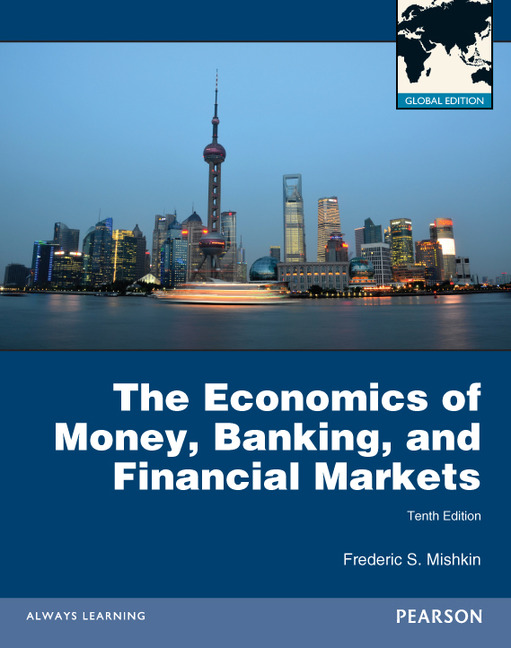Frederic Mishkin Economics Of Money Pdf Worksheet
Money is any item or verifiable record that is generally accepted as payment for goods and services and repayment of debts in a particular country or socio-economic context. The main functions of money are distinguished as: a medium of exchange; a unit of account; a store of value; and, sometimes, a standard of deferred. Financial Markets And Institutions Pdf, Chapter 2 Financial Markets And Institutions Pdf 2 Word, Pdf Economics Of Money Banking And Financial Markets, Financial Markets And Institutions Saunders Pdf, Chapter 2 Financial Markets And Institutions Pdf 2 Word, Frederic Mishkin Economics Of Money Pdf Free, Financial. Like Rose, Joe, and Ben, wished they knew more about the economics of money, banking, and interest rates. [3] Charles, and Robert Aliber. Manias, Panics, and Crashes: A History of Financial Crises. Hoboken, NJ: John Wiley and Sons, 2005. Mishkin, Frederic.

A sample picture of a fictional ATM card. The largest part of the world's money exists only as accounting numbers which are transferred between financial computers. Various plastic cards and other devices give individual consumers the power to electronically transfer such money to and from their bank accounts, without the use of currency. Money is any item or verifiable record that is generally accepted as for and repayment of in a particular country or socio-economic context. The main functions of money are distinguished as: a; a; a; and, sometimes, a.
Any item or verifiable record that fulfills these functions can be considered as money. Money is historically an establishing a, but nearly all contemporary money systems are based on. Fiat money, like any check or note of debt, is without as a physical commodity. It derives its value by being declared by a government to be; that is, it must be accepted as a form of payment within the boundaries of the country, for 'all debts, public and private'. The of a country consists of currency (banknotes and coins) and, depending on the particular definition used, one or more types of (the balances held in,, and other types of ). Bank money, which consists only of records (mostly computerized in modern banking), forms by far the largest part of in developed countries.
Contents • • • • • • • • • • • • • • • • • • • • • • • • • • Etymology The word 'money' is believed to originate from a temple of, on, one of Rome's seven hills. In the ancient world Juno was often associated with money. The temple of at Rome was the place where the mint of Ancient Rome was located. Steinberg Nuendo Free Download For Windows. The name 'Juno' may derive from the Etruscan goddess (which means 'the one', 'unique', 'unit', 'union', 'united') and 'Moneta' either from the Latin word 'monere' (remind, warn, or instruct) or the Greek word 'moneres' (alone, unique). In the Western world, a prevalent term for coin-money has been, stemming from Latin in specie, meaning 'in kind'. Magicfeatures Plugin For Magicjack Crack there.
A 640 BC one-third coin from The use of -like methods may date back to at least 100,000 years ago, though there is no evidence of a society or economy that relied primarily on barter. Instead, non-monetary societies operated largely along the principles of and. When barter did in fact occur, it was usually between either complete strangers or potential enemies. Many cultures around the world eventually developed the use of. The Mesopotamian was a unit of weight, and relied on the mass of something like 160 of.
The first usage of the term came from circa 3000 BC. Societies in the Americas, Asia, Africa and Australia used – often, the shells of the ( Cypraea moneta L. According to, the were the first people to introduce the use of and. It is thought by modern scholars that these first stamped were minted around 650–600 BC. Song Dynasty Jiaozi, the world's earliest paper money The system of eventually evolved into a system of. [ ] This occurred because gold and silver merchants or banks would issue receipts to their depositors – redeemable for the deposited.